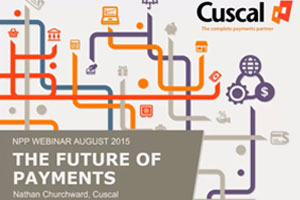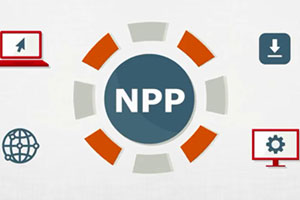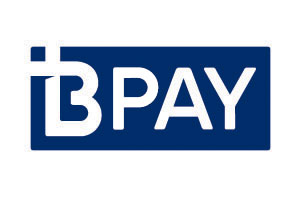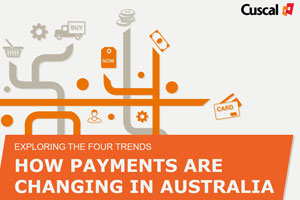 This month RFi Group sat down with the experienced and personable Craig Kennedy, Managing Director of Cuscal, to discuss the payments landscape in Australia, the shift towards ‘mobile first’ and the three themes that will drive growth for Cuscal in the coming year.
This month RFi Group sat down with the experienced and personable Craig Kennedy, Managing Director of Cuscal, to discuss the payments landscape in Australia, the shift towards ‘mobile first’ and the three themes that will drive growth for Cuscal in the coming year.
Craig cites the great people he works with, both internally and externally, as the aspect that he enjoys most about his role. “There is a great team here at Cuscal. We’ve got interesting and engaged clients and a bunch of supportive and aligned shareholders with a great board of directors – that’s a pretty inspiring combination.”
Craig references two stand out factors at Cuscal that incite his pride in the brand. “We function with integrity. I think anyone that has engaged with Cuscal or worked with us will say that we go about our business with a high degree of integrity. We also have a can-do approach. I’m pretty proud – there are things we have done that other organisations couldn’t get done in the time allotted. We’ve been able to do that for our clients without compromising the end result. For me it’s a combination of the can-do attitude and integrity.”
“We now manufacture almost all of our own products. Because we don’t have legacy platforms and are not competing with other clients for priority… our time and cost to market has significantly improved in the last five years.”
Over the last five years, Cuscal has grown and evolved significantly. Craig explains that Cuscal now has control over its key products and processes. “We now manufacture almost all of our own products. We have processing capabilities and the payments links necessary to perform key payment functions in Australia. When you’ve got those functions sitting out with a third party, the reality is that you have to compete with other clients to get priority, which is generally given to the largest paying client. Because we don’t have legacy platforms and are not competing with other clients for priority, our time and cost to market has significantly improved in the last five years.”
Craig mentions that the diversity at Cuscal, in relation to both staff and clients, has experienced dramatic change in recent years. “A lot of people perceive us to be associated with credit unions or the mutual industry. While that’s still the case, the reality is we now have a very diverse shareholding and our client base is growing significantly, especially outside the mutual sector. We have major retailers, national banks, regional banks, international banks ¿ we are a very different organisation today. If you walked through the floor here you would see people from all different nationalities and cultures. We’ve got a pretty good gender balance too: 30% of our senior leaders are female and that’s growing. We are in the process of putting in more structure and setting some objectives and targets across all of those attributes.”
“I expect that in a couple of years from now when we look back at the 12 months that we are about to embark on, it will be the year that payments via mobile phones move from the fringe to the main stream. There have been a lot of barriers and friction points, but they are breaking down at such a rate that I expect the tipping point will occur in the next 12 months.”
Craig gave us some insight into his predictions for the payments market in Australia over the next 12 months and what he believes will be essential to winning in this market. “I expect that in a couple of years from now when we look back on the 12 months we are about to embark on, it will be the year that payments via mobile phones move from the fringe to the main stream. There have been a lot of barriers and friction points, but they are breaking down at such a rate that I expect that in a couple of years from now when we look back at the 12 months that we are about to embark on, it will be the year that payments via mobile phones move from the fringe to the main stream. There have been a lot of barriers and friction points, but they are breaking down at such a rate that I expect the tipping point will occur in the next 12 months. I think that will drive mobile banking and payment activity closer together and as a result, increase the level of customer engagement with banks via mobile.”
“The key elements to win in this market will be to keep things simple and convenient, to use well integrated applications and to execute regular and relevant functional updates. I don’t think it’s difficult to stand up an interesting application, but to keep it contemporary and top of the pile – that’s a constant challenge. It’s much more dynamic today than historic ways of engaging with a customer.”
Craig believes that as Cuscal’s profile is raised due to the products it is building, combined with the acquisition of SPS (Strategic Payments Services), one of its main challenges will be to keep current and prospective clients abreast of its core capabilities.
“There is more demand for our products and services than ever before, but ironically we are still finding that some long standing clients aren’t aware of all the things we can do. One of our challenges is keeping the market up to date with what our capabilities are. With all of the opportunities for Cuscal, I think managing our capacity and our priorities will be our biggest challenge in the next 12 months.”
When it comes to innovation, Craig provides some insights from alternative and offshore markets. “I think Uber is a really innovative concept and a cool experience. That to me, when you combine functionality with utility and remove the friction, that’s when it gets interesting. I also think the New Payments Platform provides a really interesting piece of infrastructure for people to innovate and apply. I’m expecting in time there will be lots of innovation around overlay services.”
“I was in the States about a year ago and did the Silicon Valley tour and what struck me over there is that the more dysfunctional and the more legacy you’ve got to deal with and the less cooperation there is at the centre, by necessity it drives innovation. There is such a great source of innovation there because there are so many disconnected parts and people are building applications to bring them together.”
Craig elaborates on the three points of focus for Cuscal over the coming year. “There are three themes that we are looking to build more product and investment around; mobility, real time and data/analytics. We are building out more mobile banking and transactional applications – that will continue to be a focus. The second focus for us as an organisation is real time and NPP. From our point of view, the concept that you could ask for information or get confirmation over night or the next business day has long since passed and people are looking for instant gratification. If you combine that with mobility it’s a pretty powerful combination. Finally, the third theme is the relevance of data and the analytics around data. Whether that is to give more protection around fraudulent transactions, to be able to make you the right offer at the right time or simply to understand you better. If we were looking to build new products, buy more capability into the organisation or acquire another business, it would fit into one of those categories and we would want it to bring some of those capabilities and an attached client base with it.”
“We are looking for further acquisitions at the moment. We find that there’s either someone who has got a legacy business that has peaked and they are looking to exit before they get stuck with it or you’ve got two teenagers who have set up an application in their parents’ garage and they think it is the next google.” Craig laughs, “I’m looking for something in between those two extremes.”
Before the interview concludes, we ask Craig about his success and where he draws his inspiration from. He allows us a rare look into his personal life. “Different people have very different definitions of success and I’m not sure that I have found a definition that I really want to adopt as my own yet. The person that has inspired me the most in my life would be my father. There are two main qualities that make him stand out; he was incredibly determined and persistent, which allowed him to overcome a lot of adversity and, right up until the day he died he had a huge thirst to learn. I’ve got teenage children and now that I see what they are going through, I don’t know how dad dealt with us – I don’t know how he had the energy or the desire. And I was the youngest of seven! As someone who used to start work at 4am he would come home and help us with our homework and if there were subjects he didn’t know, he would learn them so he could help us. To be really honest, I’m far more calculated with what I try to absorb and learn – he seemed to just soak it all up.” “I remember someone saying when they were 19, they couldn’t believe how out of touch and stupid their parents were and by the time they were 21, they were amazed by how much they had learnt. As you get older, you realise that there would have been a bit of advice you would have benefited from along the way. So I’m enjoying all of those clashes now with my boys!”
This article first appeared in the July 2015 edition of RFI Group‘s Australian Retail Banker





 The
The 
 As we race towards the launch of the
As we race towards the launch of the 






 This month RFi Group sat down with the experienced and personable Craig Kennedy, Managing Director of Cuscal, to discuss the
This month RFi Group sat down with the experienced and personable Craig Kennedy, Managing Director of Cuscal, to discuss the 
